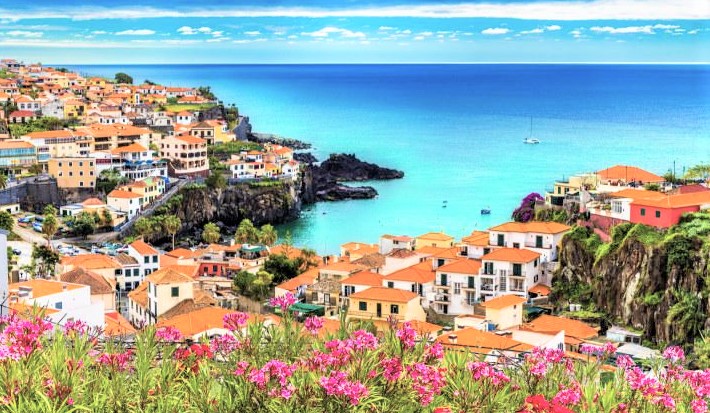Home of famous footballer Cristiano Ronaldo and festival capital of the world, Portugal’s Madeira islands are a vibrant, colourful, sunny haven in the North Atlantic.
While sugarcane was the mainstay of mediaeval operations, today, it’s tourism that drives the local economy. And along with whale watching and scenic tours, foodie excursions are big business locally – especially given the region’s unique, fortified wine.

Espada com banana is the locals’ favourite – a delicious concoction of black swordfish and, as the name suggests, banana! Cut into fillets, seasoned with lemon and garlic, and then fried in batter, the fish is said to be simply sublime – flaky and tasty. Add a few banana halves (usually cooked in the same pan as the fish) and serve the whole with a side of sautéed potatoes, and you have a feast capable of sustaining the islands’ year-round carnivals.
For a meatier meal, there’s espetada – the local version of souvla. Traditionally cooked on laurel-wood spikes, these grilled beef cubes are flavoured with garlic, rock salt, and bay leaf and served hanging vertically over the plate, with a pat of butter that melts and drips down the skewer as you eat!
Espetada is most often enjoyed with the local bread: bolo do caco. A circular, wheat flour flatbread that’s cooked on hot stones, it’s also a favourite alongside seafood, including the infamous lapas – a type of limpet that, when grilled with butter, garlic and a squeeze of lemon, is considered a Madeiran delicacy.







Click here to change your cookie preferences